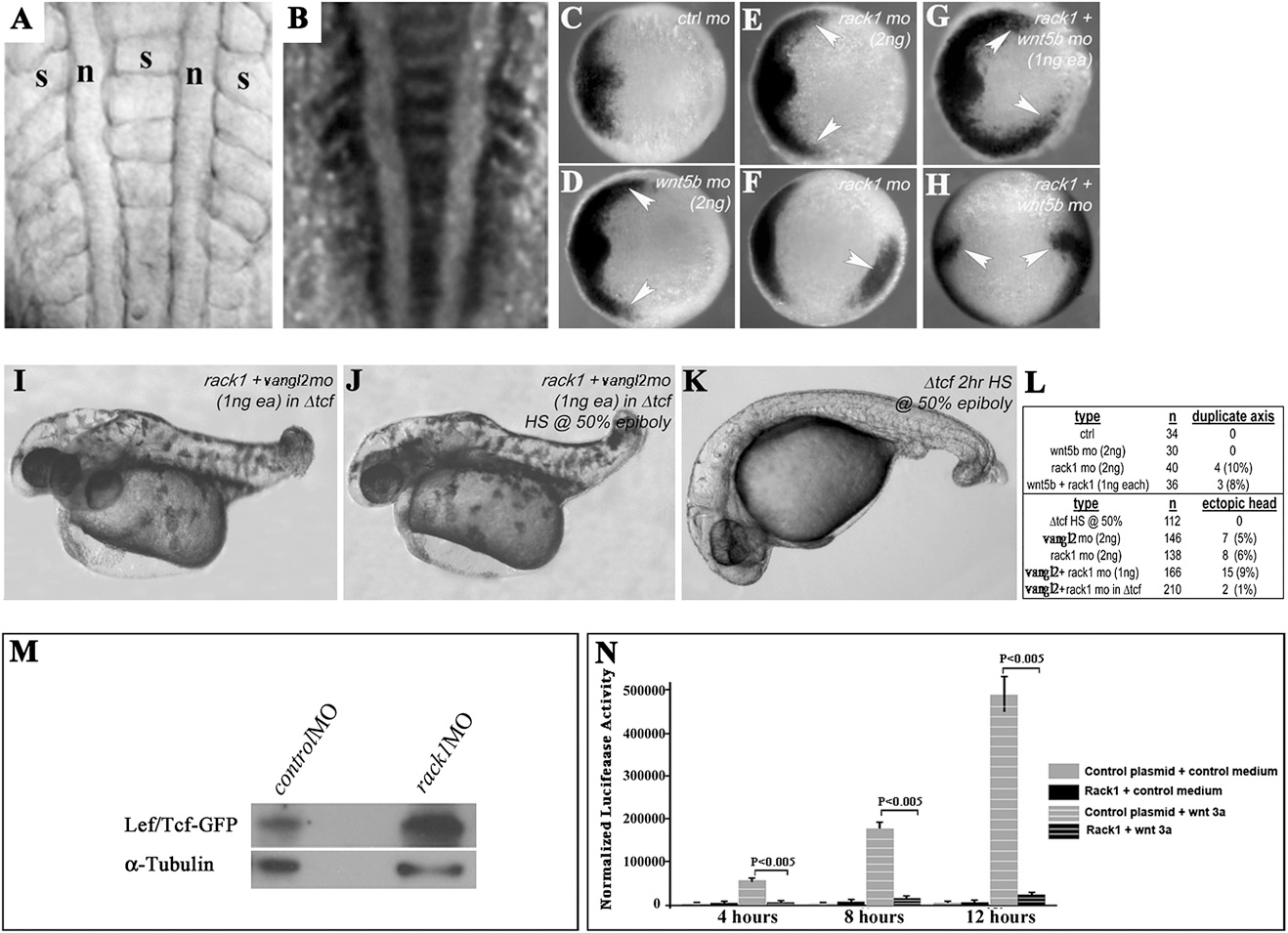Fig. S6 Rack1 antagonizes canonical Wnt activity. (A–LM) Knockdown of Rack1 or Vangl2 led to the formation of duplicated body axes (A and B) as shown in live imaging (A) and with myoD1 expression (B). The expression of a canonical Wnt target gene, chd, in control (C), wnt5b (D), rack1 (E and F), and rack1 and wnt5b (G and H) morphants. Embryos injected with rack1 and vangl2 MO s without (I) or with (J) heat-shock treatment that inactivates canonical Wnt activity. Control embryos with heat-shock treatment (K) show a typical canonical Wnt loss-of-function phenotype. The quantification of the duplicated body axes was summarized in L. (M) Western blot with an antibody against GFP or α-tubulin using protein extracts from control- or rack1 MO–injected 24-h postfertilization embryos carrying canonical Wnt reporter GFP. (N) The graph summarizing normalized luciferase activities detected in HEK293 cells cotransfected with the canonical Wnt reporter construct and the control or Rack1-expressing plasmid with or without Wnt3a stimulation. The error bars represent the SDs among the normalized reporter activities from at least three independently transfected samples. a, anterior; p, posterior; n, notochord; s, somite.
Image
Figure Caption
Acknowledgments
This image is the copyrighted work of the attributed author or publisher, and
ZFIN has permission only to display this image to its users.
Additional permissions should be obtained from the applicable author or publisher of the image.
Full text @ Proc. Natl. Acad. Sci. USA

